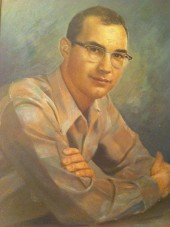June 19, 2010.
…but let’s get our history right, since that is how we learn what works!
The homosexual civil rights movement started with a few people, and they were not all out — certainly not the hundreds who attended the early meetings of Mattachine in L.A. But the leaders were, and there were only a dozen “out” at ONE, Inc., but each year after that we grew.
Those at the national organization, NACHO, were maybe 50 in total, but they represented a few hundred more, many who were out.
I think Bill Kelley has spoken to that for Mattachine Midwest. While small in number, I recall fussing then and later to a woman (Nancy maybe?) who was doing the recording for NACHO at Chicago in 1966 or ’68, and at the time I opposed letting either of the new groups in Kansas City or Houston host the next meeting as they were too young and small. I was right. What happened to them?
The Phoenix Society for Individual Freedom was the one in K.C. And Houston did keep going, and today Ray Hill is still active (his picture is in the current issue of OutSmart), and the Diana Foundation is still going, but they were originally not out. (Brandon Wolf of OutSmart magazine just published a great article on them.)
So by 1969 I have no doubt there were at least a thousand of us out and active in the national movement, but now we have probably reached ten times that number.
We were already working with allies, such as the Council on Religion and the Homosexual (San Francisco and L.A.; we featured Reverend Clay Colwell on a cover of ONE, etc.). There were “retreats,” a typical church thing, discussing the issues. The preachers in some cases were ahead of their congregations who were not quite ready to talk about homosexuality. Glide Memorial Methodist in San Francisco was a good example of educating the members. This was also true when the church started working on race issues.
It took Vern Bullough to push the ACLU to join us, and I’m still not clear why the East Coast clams their ACLU did it first.
Again, thousands of people saw us in person when we talked to churches, high schools, and college classes, and when we were on the talk shows, radio, and TV.
Don Slater co-hosted a week of talking with Maria Cole and Stan Bohrman on their KHJ TV show.
And Slater and Hal Call were pictured in Life magazine, long before Stonewall.
(Perhaps they, and all of the other people and events we did, were not cute enough or outrageous enough to get closet queens to jump out —yet Stonewall was? Now it is Ellen and the cute guys on Real World. I’ll take whatever gets young people to understand the reality of their sexual proclivities, orientation or whatever, and want to explore the history of our movement. And realize that they will not be full citizens until we change a few more laws and hearts and minds.)
Our success defies easy explanation, and two areas sure confuse even us.
First, why did the terrible problem of AIDS not destroy us? It did take away thousands of us, but the public never seemed to use that to harm us.
And the bigots must really feel frustrated that a film that was in a sense negative and should have helped their “cause,” Brokeback Mountain, in fact brought an outpouring of support from the general public.
Where in 1950 it seemed everything worked against us and that luck was not on our side, now it seems it’s the bigots who can’t seem to get anything right. It’s their turn to be unlucky.


